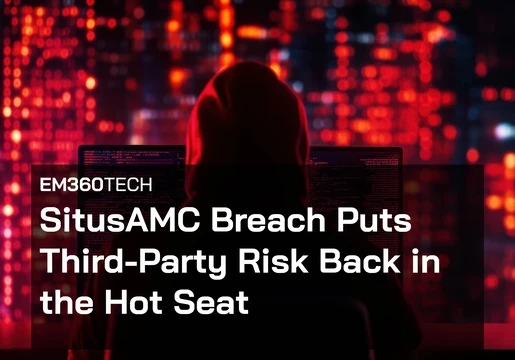If you told someone in the year 2000 that their local Blockbuster store would cease to exist in less than 15 years, they probably wouldn’t believe you.
With its revolutionary rental model and iconic blue and yellow signage, the American video rental company dominated the home entertainment industry as the world entered a new millennium, defining the way people watched movies in the pre-streaming era.
But, once boasting over 9000 stores in the US and around the world, today Blockbuster is unrecognisable from its former status as a video-rental giant in the 90s and early 2000s.
This article delves deep into what happened to Blockbuster, delving deep into the series of strategic errors, technological shifts and competition that ultimately led to its failure.

The Rise of Blockbuster
Founded in 1985 by David Cook in Dallas, Texas, Blockbuster quickly rose to become a dominant force in the entertainment industry.
The first video-rental store opened in Dallas, Texas, in 1985, offering 8,000 VHS tapes compared to the typical 200-300 at rivals. This abundance of videos, paired with the store’s extended opening hours, quickly attracted movie-hungry customers.

By the 1990s, Blockbuster was expanding globally, franchising stores in Europe, Asia and Australia and capturing the global video market. Late fees added to the revenue stream, and iconic marketing campaigns solidified their "blue and yellow" brand in pop culture.
Blockbuster became synonymous with movie nights, and a big part of weekend rituals for many families. It even negotiated lucrative deals with Hollywood studios to produce films, further solidifying its influence on the video market.
By the late 90s, Blockbuster had reached its peak. With over 9,000 stores worldwide, the company reached a whopping 65 million registered customers and a $3 billion valuation.
Why Blockbuster failed
Following its years of growth in the late 90s and early 2000s, Blockbuster faced a series of challenges that would lead to its failure as the internet became more accessible.
Online rental services were already disrupting the video rental market that Blockbuster dominated, allowing people to rent movies online without the need to go to a physical store.
Blockbuster’s biggest competitor, Netflix, was the pioneer of this new model. Founded by Reed Hastings and Marc Randolph in 1997, the company would send DVDs straight to peoples’ homes for a flat monthly fee and, more importantly, no late fees.

Customers could request the DVD they wanted online, receive the DVD on their doorstep a few days later, and place it back in their postbox when they were finished.
This convenience and accessibility was a smash hit with customers. Unlimited viewing options at a flat monthly fee and the ability to watch movies whenever you wanted meant there was no need to go to physical stores.
And Blockbuster did little to react, clinging on to its brick-and-mortar model and opting not to launch its mail-rental video service. It was even given the option to buy Netflix for a mere $50 million in the year 2000 but declined. This would prove a fatal mistake.
Blockbuster Online
Blockbuster reached its peak in the year 2004, earning $5.9 billion in revenue despite the increasing popularity of Netflix and other online video rental services.
But the rental service was already years behind its competitors. With Netflix continuing to expand its online presence, Blockbuster finally decided to take action by launching its online rental service, Blockbuster Online.
But arriving six years after Netflix, Blockbuster Online lacked user-friendliness and failed to capture the hearts of consumers accustomed to Netflix’s easy-to-use online rental service.

To encourage users to join Blockbuster online, in 2006 Blockbuster launched a program called Total Access where online customers could return rentals to Blockbuster stores and in exchange they received a DVD rental for free all for a low flat fee.
This was hugely successful but Blockbuster lost $2 each time a customer exchanged a DVD through the program – leading to increased revenue losses and failing to bring customers to its site.
In a bid to win back customers Netflix had stolen, Blockbuster eventually decided to cut late fees – which accounted for a whopping $16% of its revenue. According to then-CEO John Antioco, this sacrifice would cost the company $200 million, along with the already-spent $200 million to start Blockbuster Online. But it was too little, too late.
Cancelling late fees only brought new challenges for Blockbuster, as customers started to keep movies for longer periods without returning them, leading to in-store stock issues.
The Rise of Streaming and the Fall of Blockbuster
After a series of miscalculations and bad decisions, the final nail in the coffin for Blockbuster would finally come in the mid-2000s with the arrival and widespread adoption of online streaming.
Netflix was quick to pivot to streaming, launching a small streaming service in 2007 after years of preparing for the service to one day replace its video rental business.
Blockbuster, however, failed to react once again. Not only did it not have the resources and expertise to do so, but some Blockbuster executives initially dismissed streaming's potential and clung to the traditional rental model they had built their business on.
At the same time, the company’s debts were mounting. It had lost approximately 75% of its market value by 2005, according to Forbes, and was struggling to make ends meet as profits plummeted. There was no way it could pivot into the streaming business.
In a bid to escape from $1 billion of debt, Blockbuster filed for bankruptcy in 2013, and the company was delisted from the NYSE.
The US-based company Dish Network buys Blockbuster's remaining assets for $320 million at an auction to close many of its branches over time. Dish said it would keep only 600 branches open, but by August plans were in place to shut all remaining stores in the U.S. and cease the rent-by-mail service by November.
The last movie to be rented at a Blockbuster store was “This Is the End,” at a store in Hawaii.
Did Netflix kill Blockbuster?
While Netflix played a significant role in the fall of Blockbuster, it would be an overstatement to say it alone led to its downfall. The video rental giant was already facing serious challenges long before Netflix rose to prominence.
Blockbuster initially underestimated the threat of online rentals and streaming as a whole, clinging to their brick-and-mortar model for too long. Maintaining these physical stores proved expensive, especially as customer traffic declined.
Blockbuster's acquisition by Viacom in 1994 also saddled them with significant debt, limiting their ability to adapt and compete in a rapidly changing industry. Netflix simply capitalized on these trends and offered a superior value proposition that resonated with customers.
What Happened to Blockbuster? Is it still around today?
After years of growth in the late 90s and early 2000s, Blockbuster faced a series of challenges as streaming became more accessible which would lead to the company going bankrupt and closing all but one of its stores.
This last store, located in Bend, Oregon, is known as "The Last Blockbuster" and operates as a franchise rather than a corporate-owned store.

While this iconic relic of the video rental era thrives in Bend, it's important to remember that there are no other physical Blockbuster stores anywhere else in the world for a reason.
Dish Network, who owns Blockbuster, has no plans to open new stores and focuses on other ventures, so we’re unlikely to see any new stores opening anytime soon.
But, while the era of widespread Blockbuster stores is over, the cultural significance of Blockbuster cannot be understated.
The last store in Bend stands as a reminder of a bygone era.







Comments ( 0 )